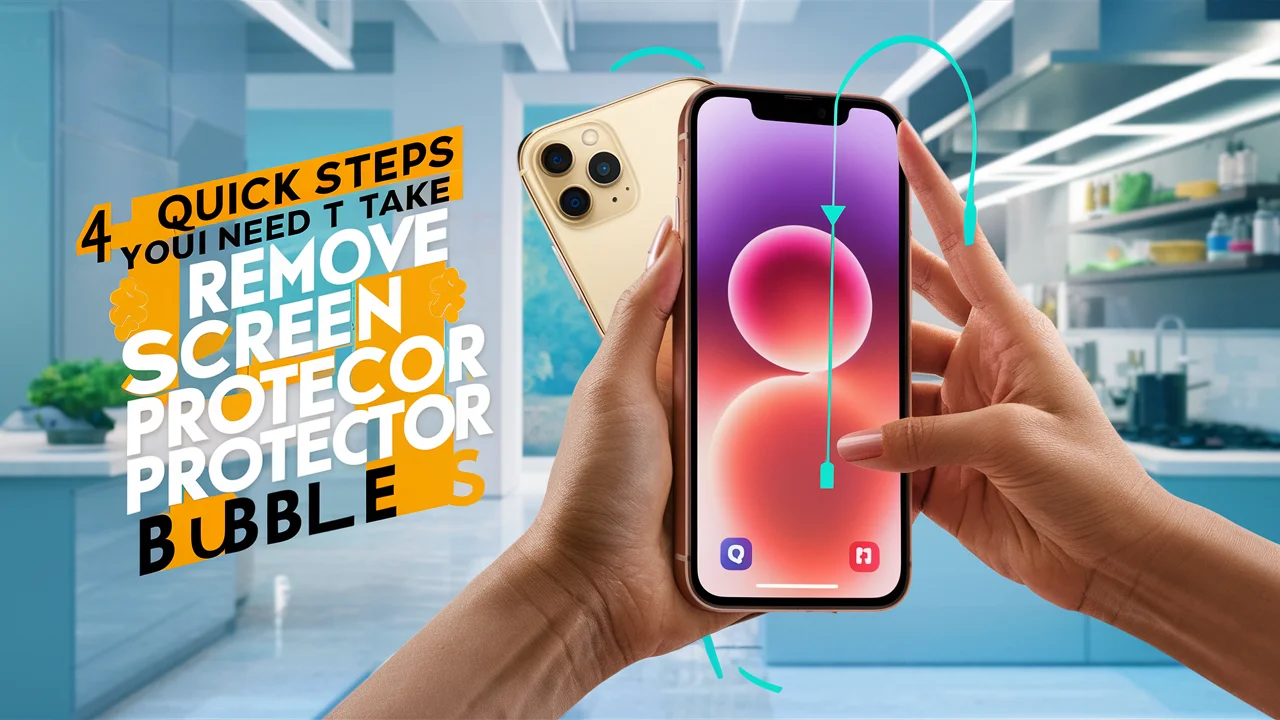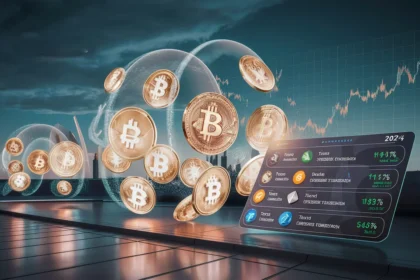In today’s tech-savvy world, our smartphones are more than just devices; they’re extensions of ourselves. Whether you’re rocking the latest iPhone 14 Pro or still loving your trusty iPhone 13, keeping that sleek screen pristine is a top priority. Enter the tempered glass screen protector – your phone’s knight in shining armor. But what happens when this guardian comes with its own set of pesky air bubbles? Fear not! We’re about to dive into the world of bubble-free bliss with four quick tips that’ll have your iPhone screen protector looking flawless in no time.
Understanding Air Bubbles in Glass Screen Protectors
Before we jump into the bubble-busting techniques, let’s get to the root of the problem. Why do these annoying air pockets appear in the first place when you’re trying to safeguard your precious iPhone 14 or iPhone 13 Pro?
Air bubbles in your tempered glass screen protector can occur for several reasons:
- Dust particles: Even microscopic specks can create lift-off points for bubbles.
- Uneven application: Applying pressure inconsistently can trap air.
- Curved edges: Modern iPhones with curved screens can make edge application tricky.
- Low-quality adhesive: Inferior screen protectors may not bond well to your device.
Understanding these causes is crucial in preventing and removing bubbles from your iPhone screen protector. Whether you’re dealing with an iPhone 14 tempered glass screen protector or a 3D screen protector for your iPhone 13, the principles remain the same.
Preparing for Bubble Removal: Essential Tools and Environment
Before you start your bubble-banishing mission, it’s essential to create the right environment and have the proper tools at hand. Here’s what you’ll need:
- Microfiber cloth: For cleaning your screen and the protector
- Credit card or plastic squeegee: To push out bubbles
- Dust removal stickers: To lift any stubborn particles
- Clean, well-lit workspace: Preferably dust-free
- Patience: The unsung hero of perfect screen protector application
| Tool | Purpose |
|---|---|
| Microfiber cloth | Cleaning and lint-free wiping |
| Credit card/squeegee | Bubble removal |
| Dust removal stickers | Particle lifting |
| Clean environment | Prevent new dust contamination |
Remember, clean hands are just as important as clean tools. Wash and dry your hands thoroughly before handling your iPhone or the screen protector.
Tip 1: The Gentle Squeeze Technique
Our first method is all about finesse. This technique works wonders for both newly applied protectors and those stubborn bubbles that have overstayed their welcome on your iPhone 13 tempered glass screen protector or iPhone 14 Pro tempered glass screen protector.
Step-by-step guide:
- Start at the center of the screen and work your way outwards.
- Use a credit card wrapped in a microfiber cloth to apply gentle, even pressure.
- Move in small, circular motions to push bubbles towards the edges.
- For edge bubbles, use the corner of the card to gently lift and reseat the protector.
“Patience is key. Rushing the process can lead to more bubbles or even damage to your screen protector.” – Tech Expert Sarah Lin
This method is particularly effective for 3D screen protectors, as it allows you to work around the curved edges of your iPhone screen without compromising the protector’s integrity.
Tip 2: The Lift and Reapply Method
Sometimes, bubbles are caused by dust particles trapped between your iPhone and the glass screen protector. In these cases, the lift and reapply method can be a game-changer.
Here’s how to do it:
- Identify the problem area on your iPhone screen protector.
- Carefully lift the edge of the protector nearest to the bubble using a thin plastic card.
- Use a dust removal sticker to clean any particles from both the screen and protector.
- Slowly lower the protector back down, using your finger to smooth it out.
- If needed, use the gentle squeeze technique to remove any remaining air.
This method is particularly useful for iPhone 14/13/13 Pro screen protectors, as their precise fit leaves little room for error. Remember, slow and steady wins the race when it comes to reapplication.
Tip 3: The Vegetable Oil Trick
For those truly stubborn bubbles that refuse to budge, it’s time to break out the secret weapon: vegetable oil. This trick works on various types of screen protectors, from a basic glass screen protector to a more advanced iPhone 14 Pro tempered glass screen protector.
Follow these steps carefully:
- Place a tiny drop of vegetable oil on the bubble.
- Use a microfiber cloth to gently work the oil into the bubble.
- The oil will help the adhesive flow and eliminate the air pocket.
- Wipe away any excess oil with a clean, dry part of the cloth.
Caution: Use this method sparingly and as a last resort. Too much oil can affect the adhesive’s integrity.
Tip 4: The Professional’s Secret – Using a UV Light Cure
For those who want to take their screen protection game to the next level, consider a UV-curable glass screen protector. This professional-grade solution is becoming increasingly popular among iPhone enthusiasts.
The UV light application process:
- Apply the screen protector as usual, ensuring proper alignment.
- Use the included UV light to cure the adhesive, typically for about 15-30 seconds per section.
- The UV light activates the adhesive, creating a stronger bond and eliminating bubbles.
| Pros | Cons |
|---|---|
| Extremely durable bond | More expensive than standard protectors |
| Virtually bubble-free results | Requires special equipment (UV light) |
| Enhanced clarity and touch sensitivity | Cannot be easily removed or reapplied |
This method is particularly effective for high-end models like the iPhone 14 Pro tempered glass screen protector or iPhone 13 Pro tempered glass screen protector, where clarity and seamless application are paramount.
Prevention is Better Than Cure: Avoiding Bubbles in the First Place
While knowing how to remove bubbles is crucial, preventing them is even better. Here are some tips to ensure a bubble-free application from the start:
- Choose the right protector: Opt for high-quality tempered glass screen protectors designed specifically for your iPhone model.
- Clean thoroughly: Use alcohol wipes to remove all oils and dust from your phone’s screen before application.
- Use alignment tools: Many screen protectors come with application frames to ensure perfect positioning.
- Apply in a steam-free bathroom: The moisture in the air helps reduce dust particles.
Common mistakes to avoid:
- Rushing the application process
- Touching the adhesive side of the protector
- Applying in a dusty environment
- Using excessive force during application
By following these preventive measures, you’ll significantly reduce the chances of dealing with air bubbles in your iPhone screen protector.
When to Replace Your Screen Protector
Even the best phone screen protector has a lifespan. Here are signs that it might be time for a replacement:
- Cracks or chips: These compromise the protector’s integrity.
- Yellowing: This can occur over time and affect screen clarity.
- Persistent bubbles: If bubbles won’t go away, it’s time for a new protector.
- Reduced touch sensitivity: This indicates the protector is no longer fitting properly.
When selecting a replacement, consider factors like:
- Compatibility: Ensure it’s designed for your specific iPhone model.
- Material: Tempered glass offers superior protection and clarity.
- Features: Look for oleophobic coatings and anti-glare properties.
“A quality screen protector is an investment in your device’s longevity. Don’t skimp on protection for your valuable iPhone.” – Mobile Device Expert Mark Johnson
Conclusion:
Mastering the art of applying and maintaining a bubble-free screen protector is essential for any iPhone user. Whether you’re protecting an iPhone 14, iPhone 13, or any other model, these tips will help you achieve that perfect, crystal-clear finish.
Remember, the key to a flawless screen protector application lies in patience, cleanliness, and using the right techniques. By following this guide, you’ll not only be able to remove those pesky air bubbles but also prevent them from appearing in the first place.
Invest in a high-quality tempered glass screen protector, take your time during application, and use these tips when needed. Your iPhone’s screen will thank you with long-lasting clarity and protection. Here’s to bubble-free browsing and pristine screens on all your future iPhone adventures!
Faq’s
Q: Can I use a hairdryer to remove bubbles?
While heat can make the adhesive more pliable, it’s not recommended as it can damage both the protector and your phone.
Q: How long should I wait after applying a screen protector before using my phone?
A: It’s best to wait at least an hour to allow the adhesive to set fully.
Q: Can bubbles in my screen protector damage my phone's screen?
Bubbles themselves won’t damage your screen, but they can reduce the protector’s effectiveness against impacts.












